Tuesday, June 27, 2023: In search of the gold!
Info:
Barkerville is a Heritage Village, a kind of open-air museum, on the original site of the Cariboo Gold Rush’s largest gold discoveries. The town was founded in 1862 by Billy Barker, who had found gold at Williams Creek a year earlier. In the mid-1860s, 5000 people from all over the world lived there, about half of them Chinese.
German girls were sold to Barkerville and had to work there as dancers (Hurdy-Gurdy girls).
My opinion:
Another random stroke of luck … happy coincidence. Seeing and experiencing what a gold mining village was like goes far beyond the knowledge you can acquire through books! Barkerville was a detour, but definitely worth it!
Diary:
After saying goodbye to Donna and Paul, I headed toward Prince George, passing through Mount Robson National Park along the way. Mount Robson is with almost 4000 m the highest mountain of the Canadian Rocky Mountains.
At Overlander Falls, I stopped and hiked the short distance through the forest to the falls. After all, the overlanders were part of the issue that would occupy me for the next few days. A group of about 150 men and one woman set out in 1862 from Fort Garry, now Winnipeg, to travel overland across the Rocky Mountains to the areas where gold had been found.
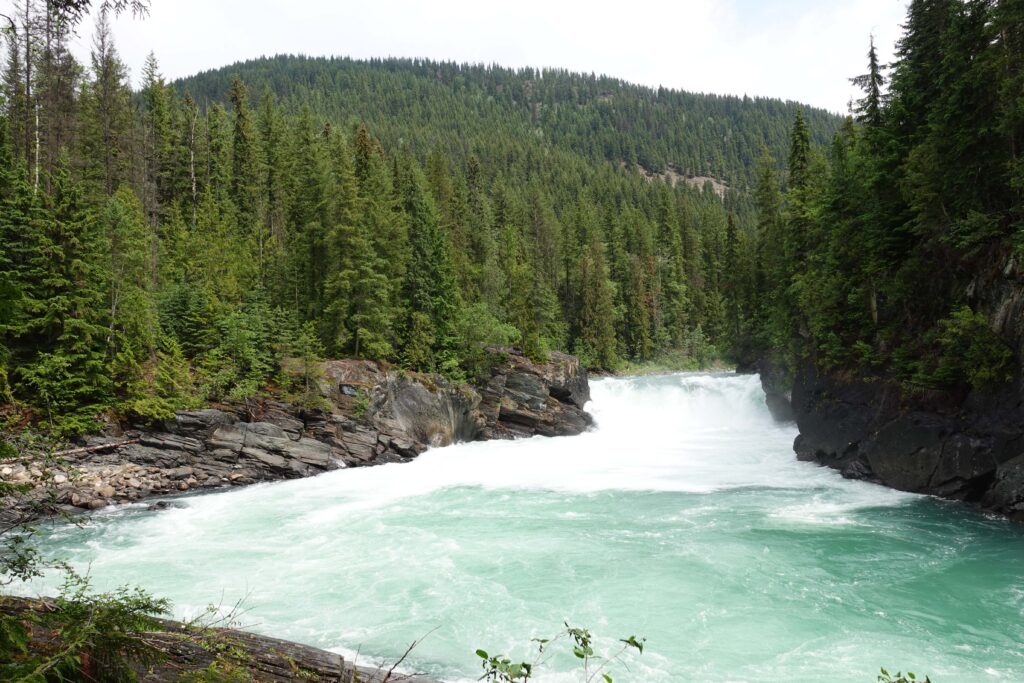
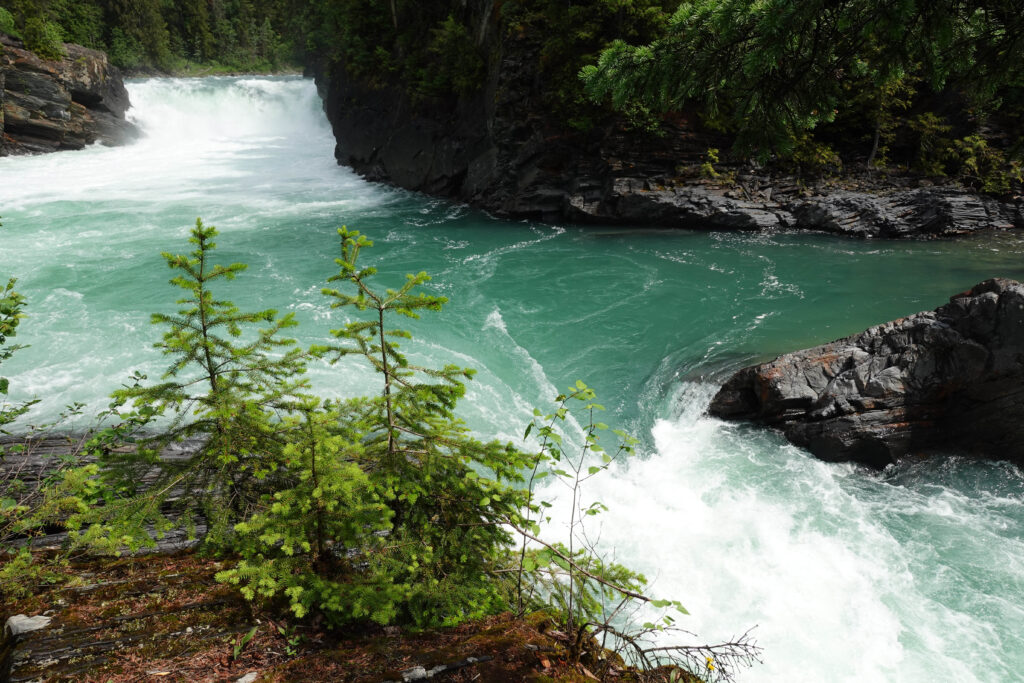
I then had my lunch with a view of Mount Robson. Anyway, I’ve mentioned before that sometimes I’m overwhelmed by what I see and experience. Overlander Falls and Mount Robson were again such an experience that filled me with wonder and great gratitude.
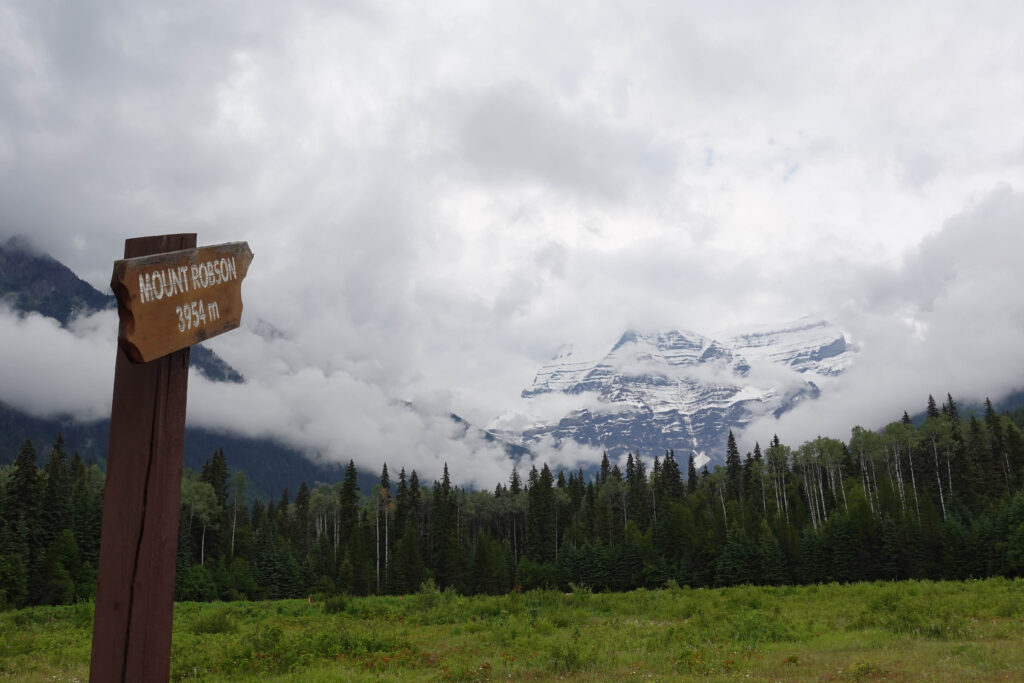
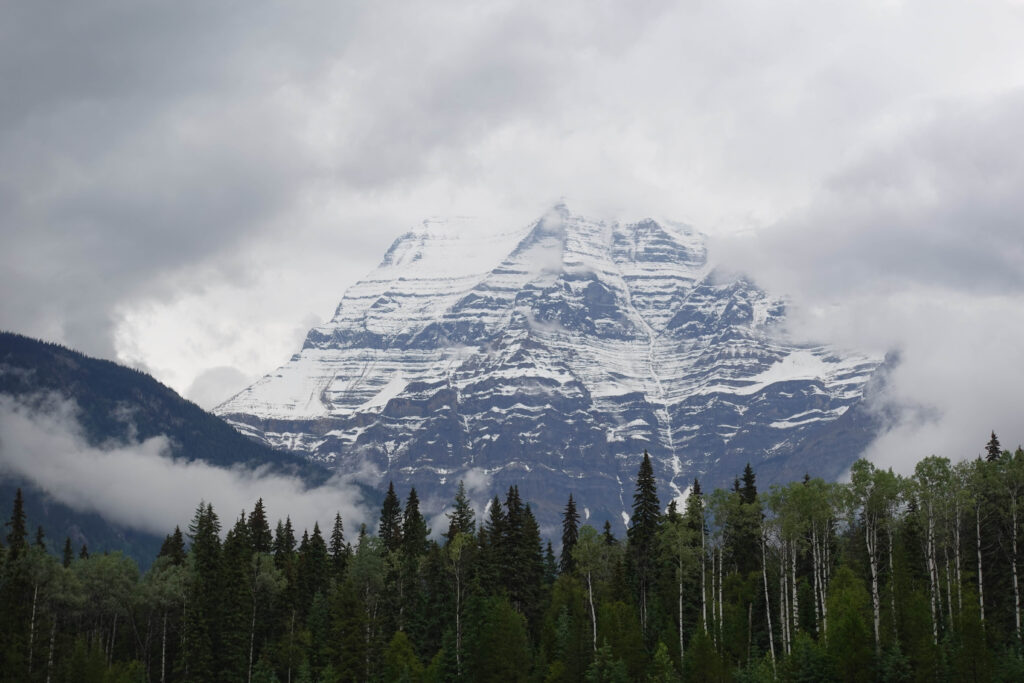
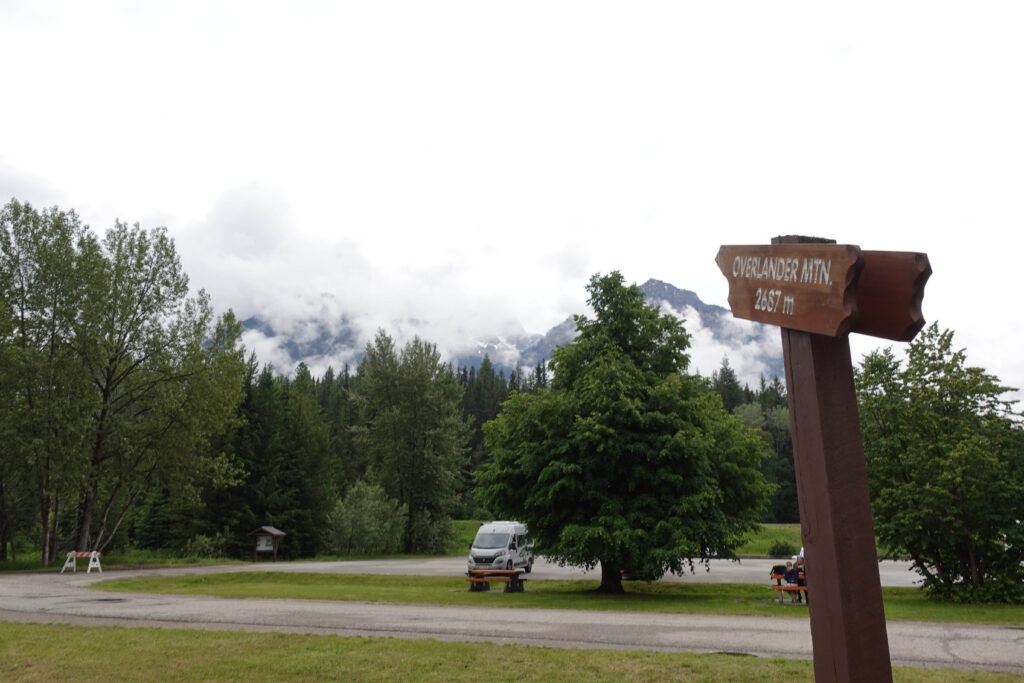
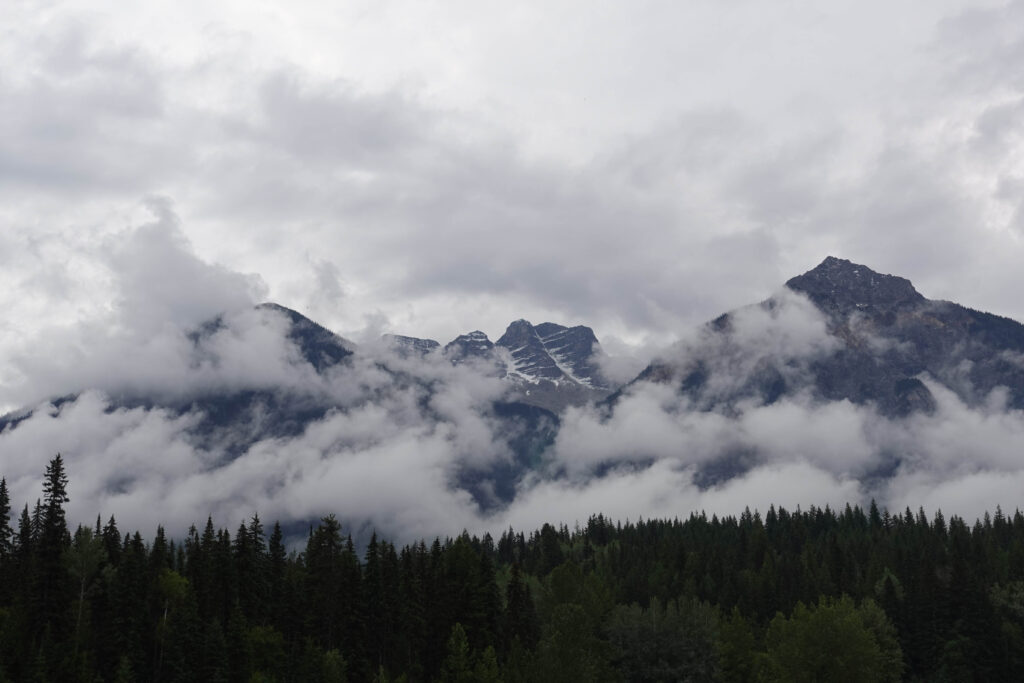
Prince George is now a city of about 80,000 people, located at the confluence of the Fraser River and the Nechako River. Where Lheidli T’enneh Memorial Park is located today, Fort George, a North West Company trading post founded by Simon Fraser, was built in the early 19th century.
I visited the place where once was the cemetery of the Lheidli T’enneh on the Fraser River. Nothing remains of the fort and First Nation settlement, but a school and railroad station from around 1910 do.

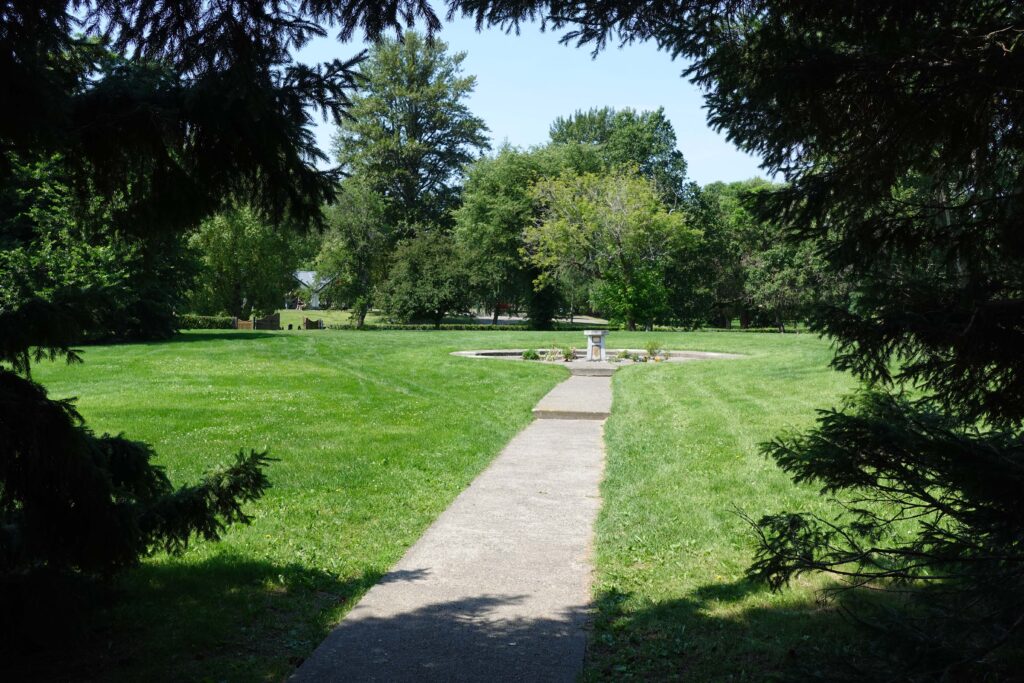
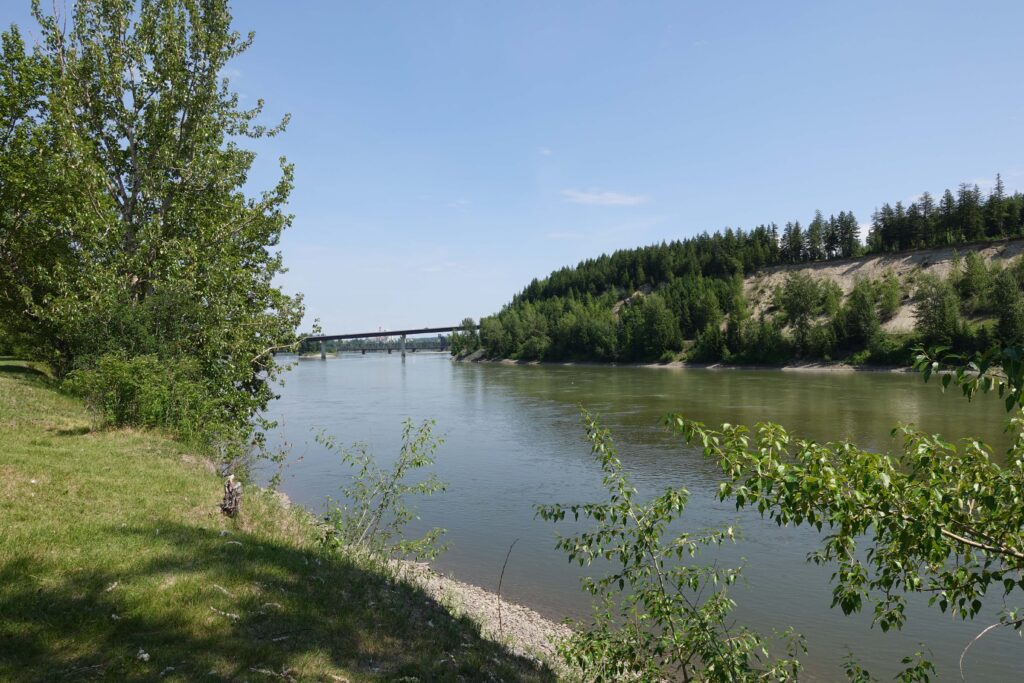
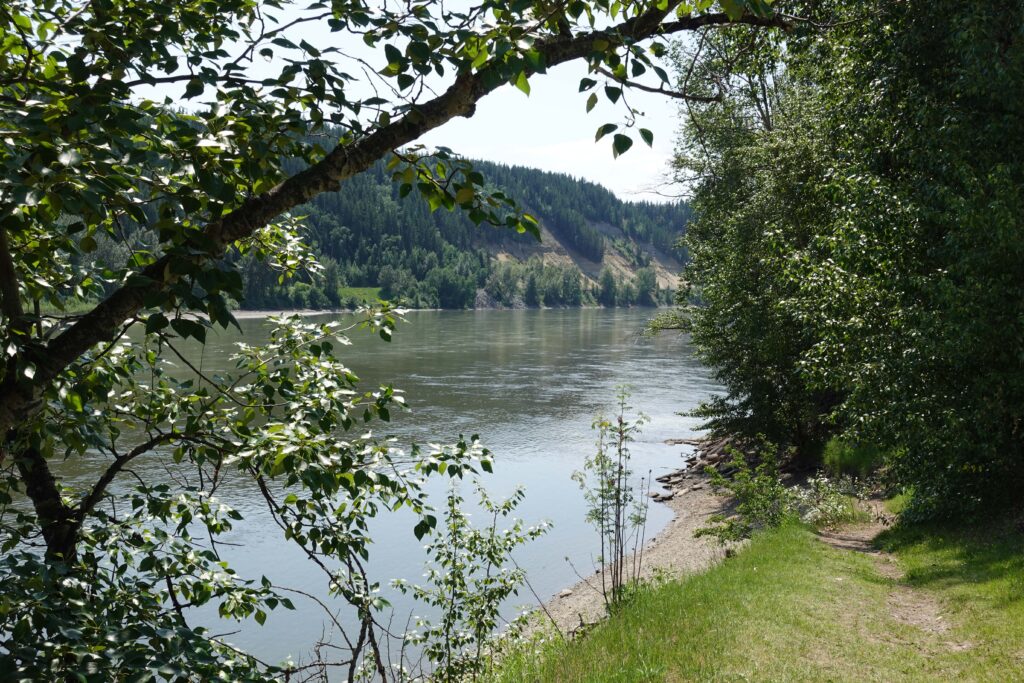

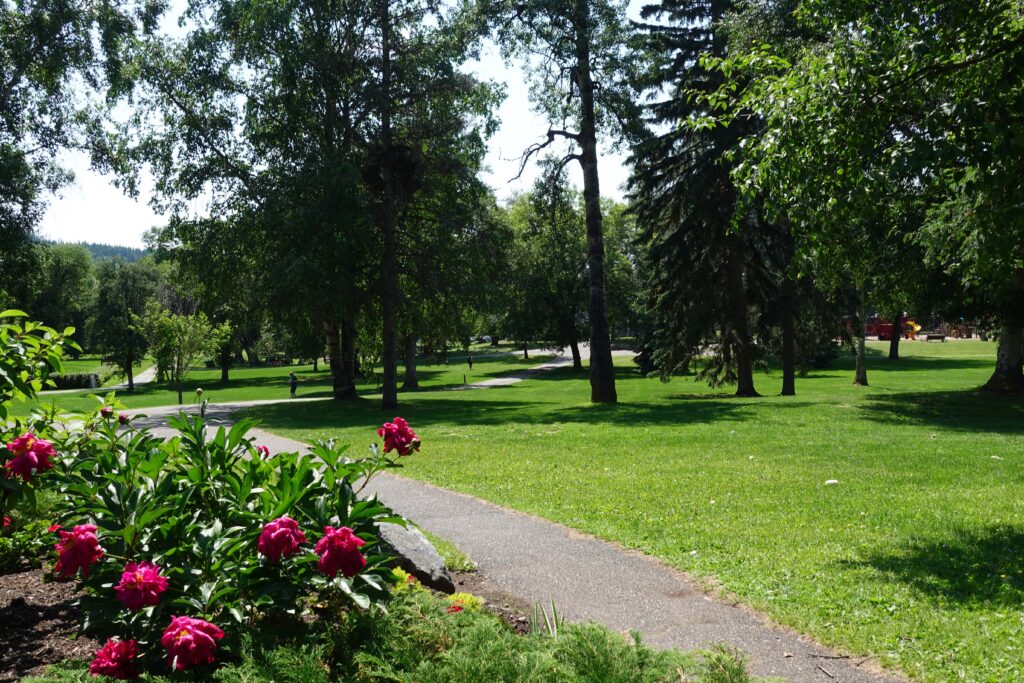

Prince George is a nice little town. No matter which direction you come from, the surrounding area is quite a bit higher, and you first have to drive a long way downhill to get to the center. I took a walk on Cottonwood Island (lunch by the river this time). I also spent some time at Exploration Place, a history and science museum, where I discovered exhibits from the Burgess Shale! (I showed you where they were found in my blog about my hike around Emerald Lake). Beautiful, the fossils in the dark gray rock!
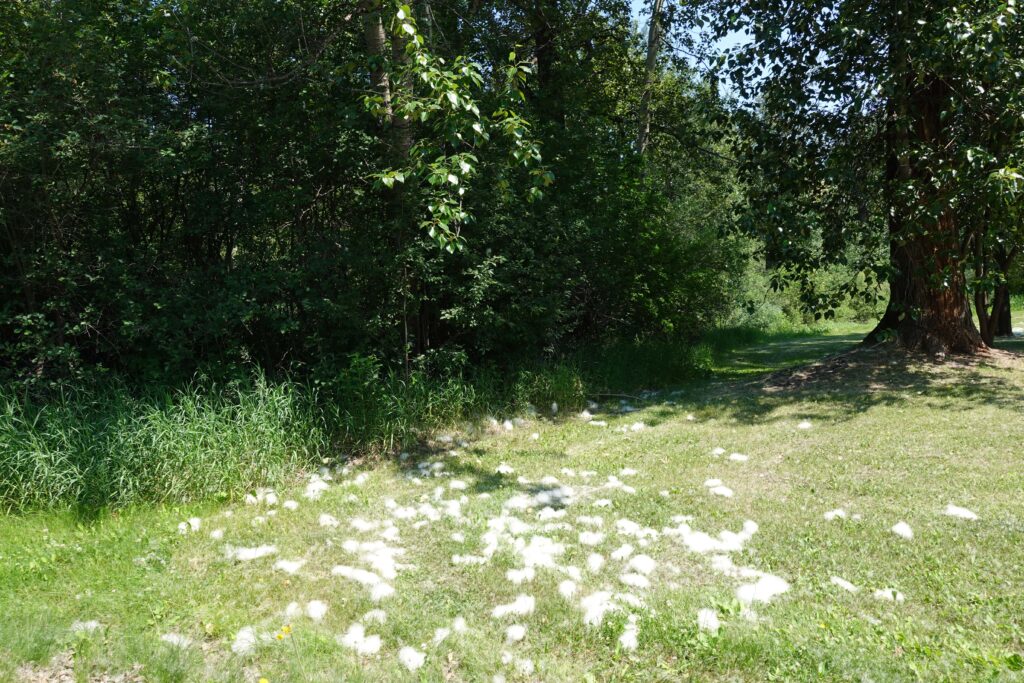

After two nights in Prince George, I left for Barkerville for my trip down memory lane.
I owed the idea to my writing colleague Jana Beck, who wrote a book called “Chicago in Flames”, which was about the Great Chicago Fire of 1871. The main character, Louisa from Germany, had previously worked in Barkerville as a Hurdy-Gurdy girl. So it made sense that the next book would be the prequel: Louisa’s time at Barkerville.
And since I was in the area anyway, I took a week off from driving toward Alaska and instead of going to Dawson Creek, I went to Prince George and then south to Barkerville.
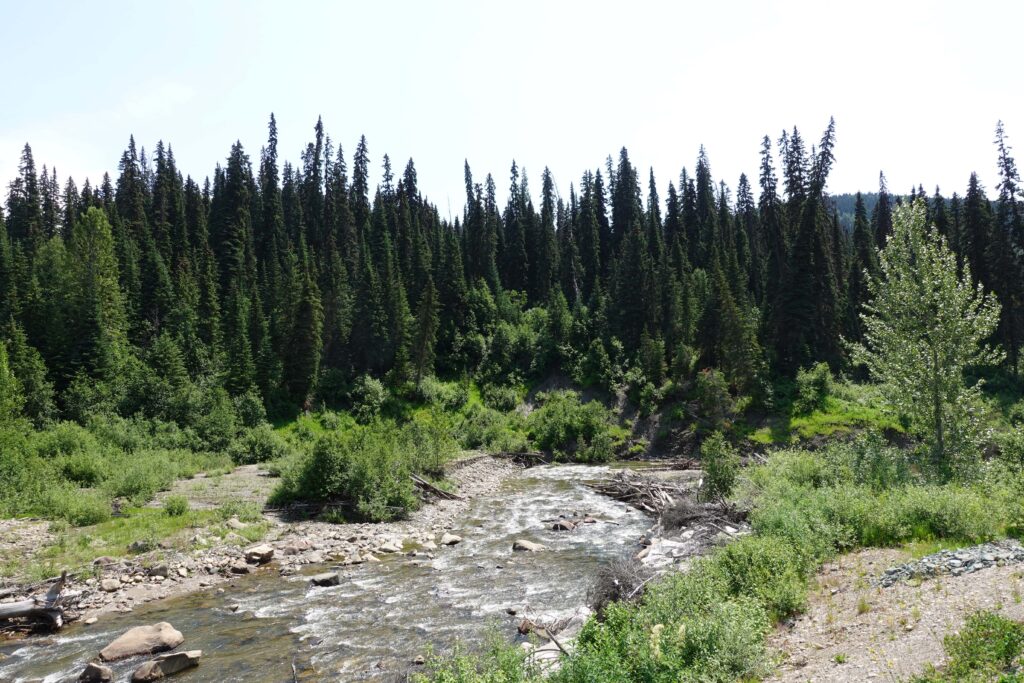

It was totally exciting from the first moment. I spent two days there and still haven’t learned everything there is to know. The subject is so complex: the discovery of the gold, the geology, the geography, what the gold mines looked like, how work was done, how people lived there, what they wore, how they kept in touch with home, how they were fed, what the food cost, where they came from, how they got there, what it looked like, the technology of the Cornish Wheel, how the Chinese workers lived, how the First Nation were treated, … whole books have been written about it. Or that Chinese girls had to have their feet bound during the Ch’ing Dynasty, which meant they could barely walk, much less travel. That 15% of Chinese workers did not survive the two-month ship voyage. That the library was one of the most important places, there the newspapers from home were read to the gold diggers – it was the news from half a year ago, but still.
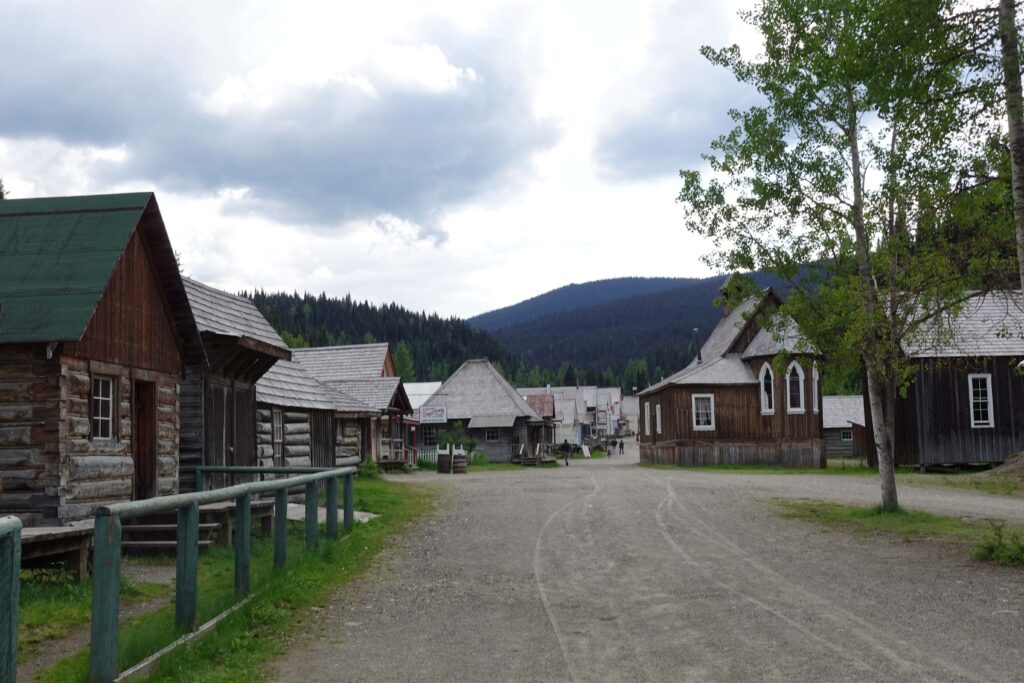

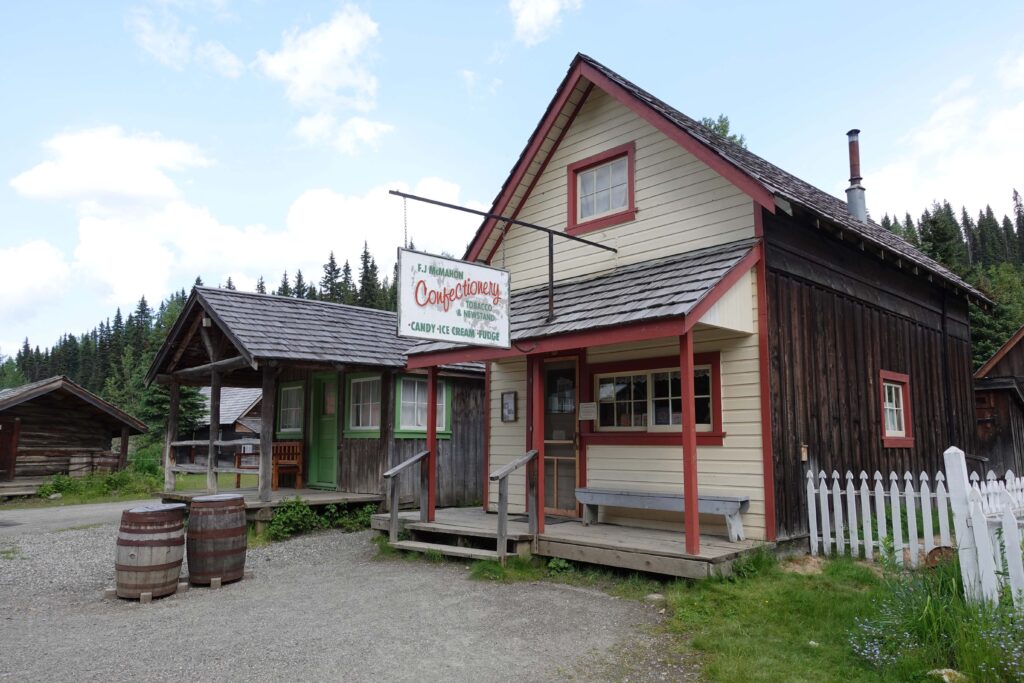

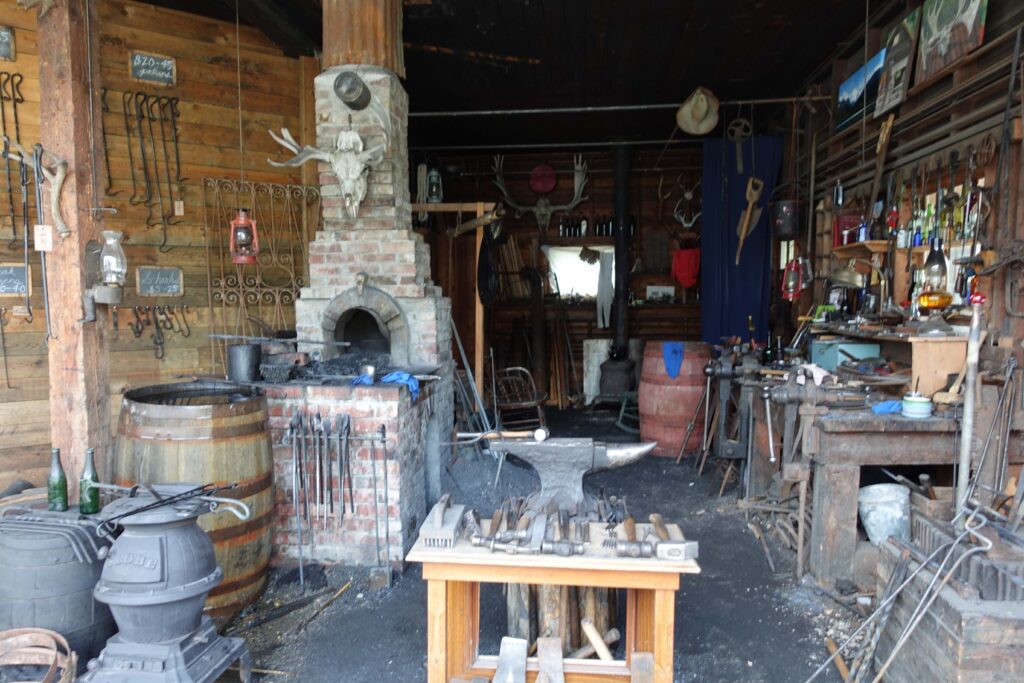
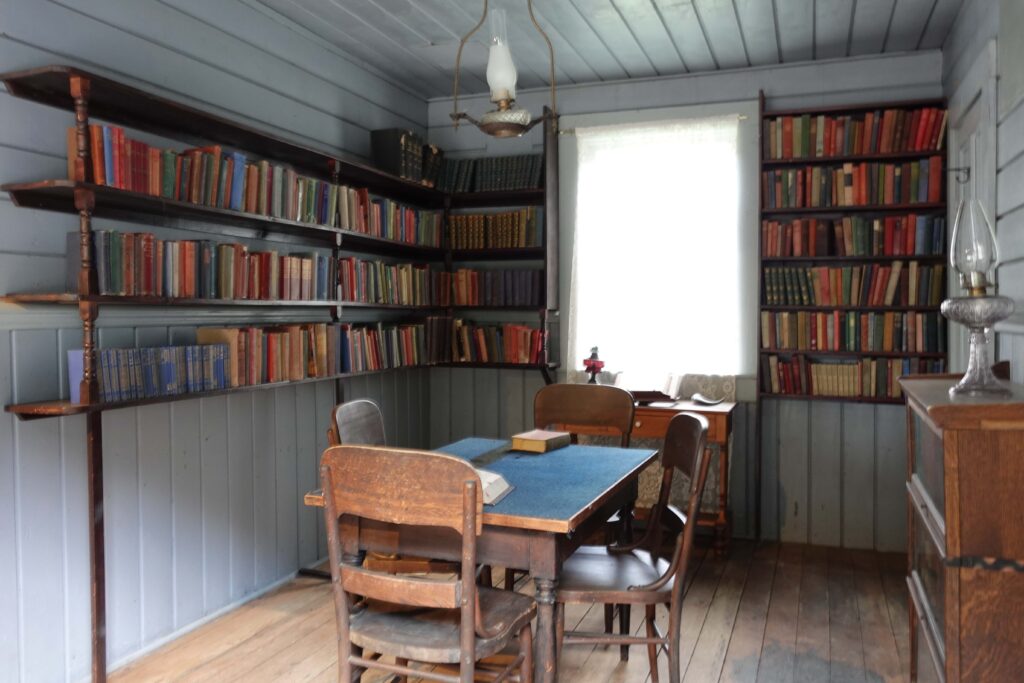
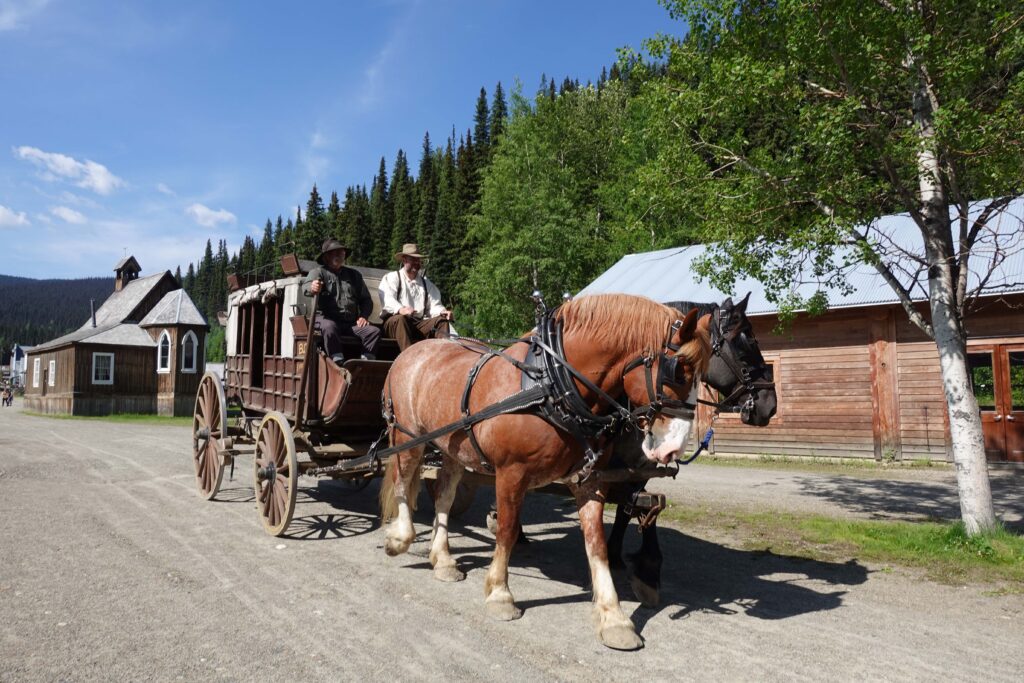
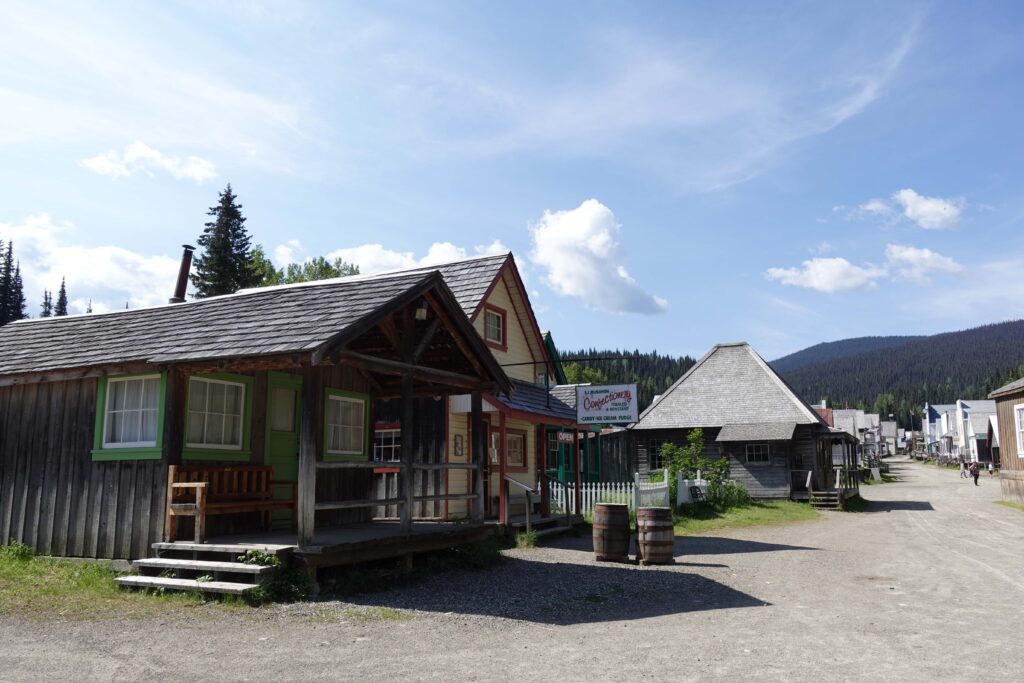


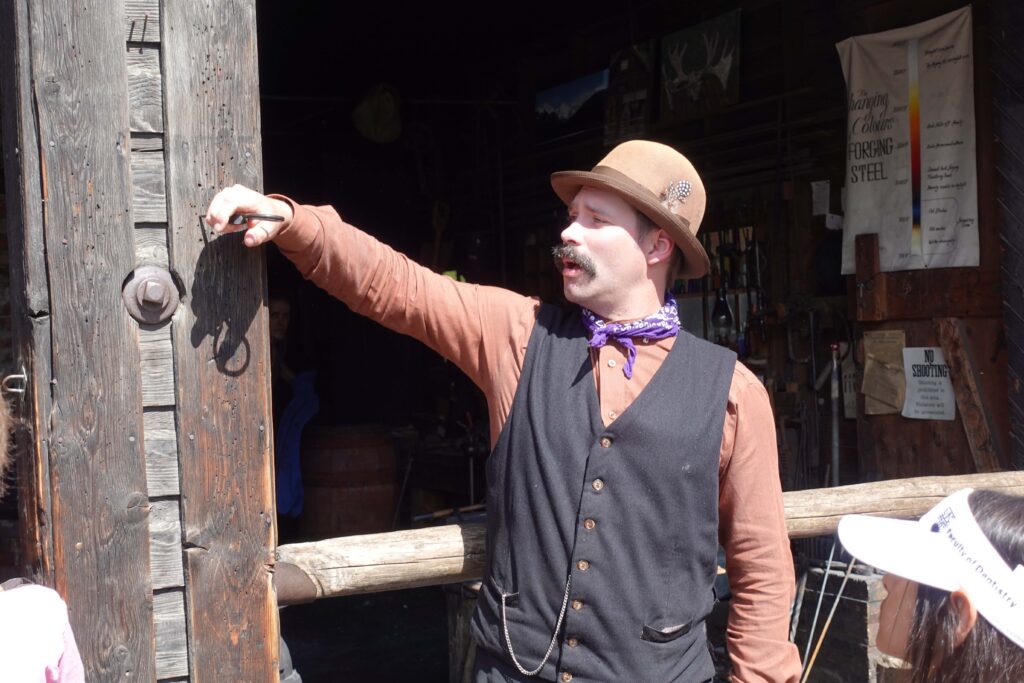
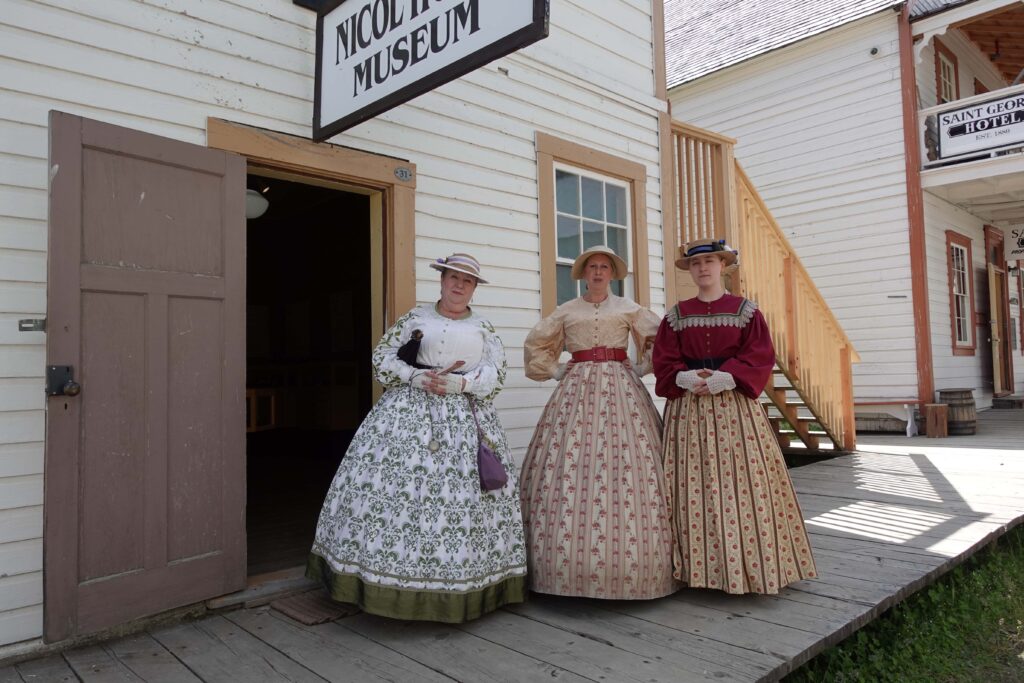
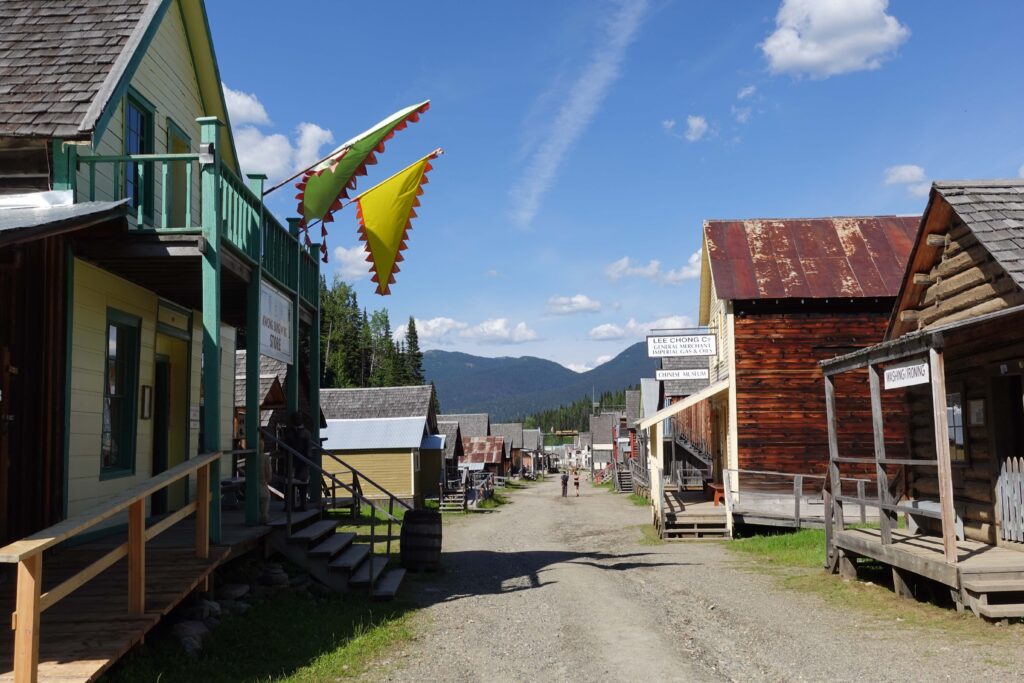

I took a lot of photos and sent them to Jana Beck. Also, on the last evening I climbed into the stream bed of Williams Creek and picked up some small stones from the water. Simply out of sentimentality. They are only stones. But they will travel to Alaska and to California and to Ohio and to Austria. Whether by ship or by plane, I do not know yet. In any case, first of all with Annie Way.
Fortunately, there was no bear at Williams Creek when I was there at the water’s edge. Because again I had no Bear Spray with me … (Anyway, the only beast that wanted to attack me was a dog.)

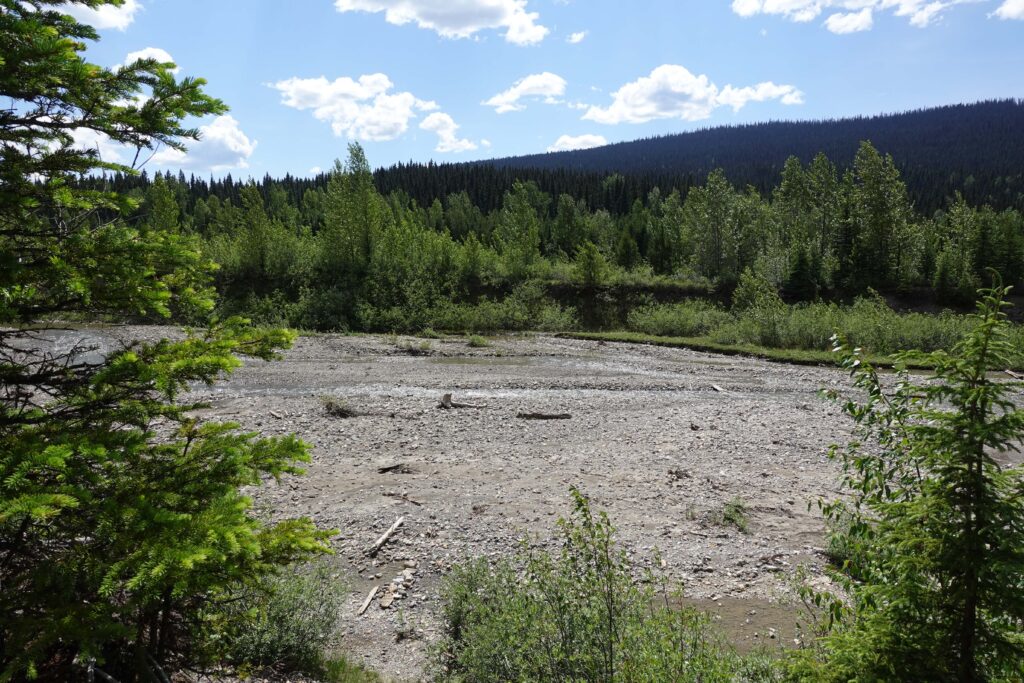
I spent one more night in Prince George, and then I finally went to Dawson Creek.
The information I received at Barkerville is so extensive that I wouldn’t even know where to start. Visiting there gave me a better understanding of what was going on in the Gold Rush. The fates of the people who took on or had to take on the journey by ship around South America or across the Pacific from China with so much hope, some of whom were exploited, wanted to go home but couldn’t afford the return trip and worked hard year after year until they finally did … while others actually got rich and lived in nice houses – all this was interesting and touching. Barkerville was a multicultural society where people from every continent lived together even before slavery was abolished in the United States. Nevertheless, there was extreme oppression as far as the Chinese and indigenous populations were concerned.
You can find commemorative signs in many places in Canada where the prime minister has apologized at some point in the last twenty years for the injustice that had been done to the people. It almost seems as if Justin Trudeau is racing around the country full-time to make amends for all this and extend a hand of reconciliation. Barkerville has two such boards, one for the Chinese population and one for the indigenous population. Actually, it should have a third. For the Hurdy-Gurdy Girls.
I’m very glad I took this detour into the past. I had several “aha”-experiences that made me understand some things better – both in the past and in the present.

